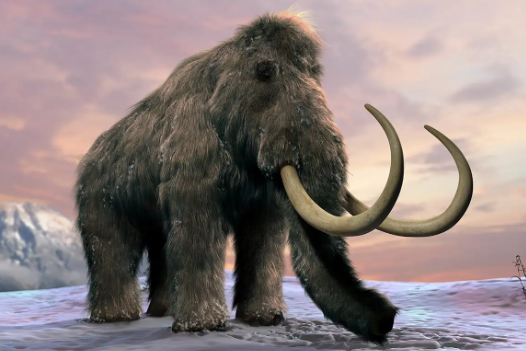When you think of the woolly mammoth, you think of a giant creature that went extinct centuries ago. With science as it is now, that may not entirely be the case moving forward. Researchers are currently in the midst of planning to use an elephant to be the incubator and surrogate of an embryo that will carry the DNA structure of the extinct woolly mammoth, thus making it a woolly mammoth and elephant hybrid. A bioscience company called Colossal Biosciences believes that within the next few years they will be able to make this a reality. Their hopes are that in bringing this extinct mammal back to the Siberian tundra, that it could eventually help with restoring the ecosystem to what it once was thousands of years ago and help fix the climate changes that we are facing now as a planet.

Colossal has already received $15 million in funding and is currently in the works of carrying out experiments in their Boston, MA and Dallas, TX laboratories. Dr. George Church, who is a biologist at Harvard Medical School, is the researcher who is overseeing this project. He has spent the last ten years with his team developing tools and techniques for potentially reviving extinct mammoths. For him and his team of researchers, having the funding and the backing to start this project is one that they have only dreamed of being able to do before now.
Part of the interest in this is due to the ecosystem of the Siberian tundra- it used to be a grassland and it is believed that the woolly mammoth was the reason it was that way. They believe that the woolly mammoth created a unique ecosystem by simply existing. Being native and active in that region, the woolly mammoth would have easily maintained the grasslands by breaking up moss, knocking down trees to clear land, and then providing a re-occurring and natural fertilizer with their fecal matter. When they went extinct, their habits no longer preserved the tundra therefore allowing moss to grow unchecked. This region has been rapidly warming and releasing carbon dioxide, and researchers believe that reviving the woolly mammoth would restore the grasslands to what they once were and would keep the soil from melting and eroding, which could potentially even lock away the heat-trapping carbon dioxide that is ever present today.
It is believed that in order to achieve this, Dr. Church and his team can use the Nobel Prize-winning genome editing method created by Emmanuelle Charpentier and Jennifer A. Doudna in 2012 called “Crispr-Cas9”. This technology allows scientists to accurately delete sections of DNA while also allowing them to create cuts where they can insert new genes. This also speeds up the process of editing existing genes and modifying them, making the task less daunting.

There is a lot of debate within the scientific community regarding whether this is a moral or immoral act of “playing God”, but many researchers see it as a way of reducing, and in some cases reversing, the harm humans have caused this planet- especially in regards of bringing species to extinction. They also believe it can be a way of preserving species that are dwindling and dying out due to manmade catastrophes and disasters- some examples are the Australian bush fires and how humans would bring species to the brink of- if not completely- extinction through hunting and sport.
I am interested in seeing how this plays out. Scientifically, it is a fascinating notion to be able to restore the DNA of a mammoth- or really any creature- once it has become extinct. It is also slightly terrifying to think of what life could be like with mammoths that would need to adapt to an environment where they were not environmentally use to. Would they be able to survive in the environment now with the rapid changes to the ecosystem? Would their DNA structure be equipped to handle those changes? Would humans be able to co-exist with them in today’s day and age or will there be issues with co-habitation? If successfully brought back, who will keep the mammoths in check? Will there be a designated team of researchers and scientists overseeing the mammoths to keep them from evading other regions surrounding the tundra they wish to fill with these mammoths? Many questions arise and many answers are still left to be pondered.












